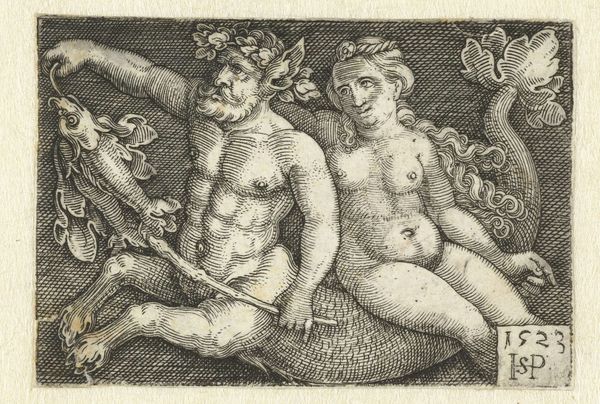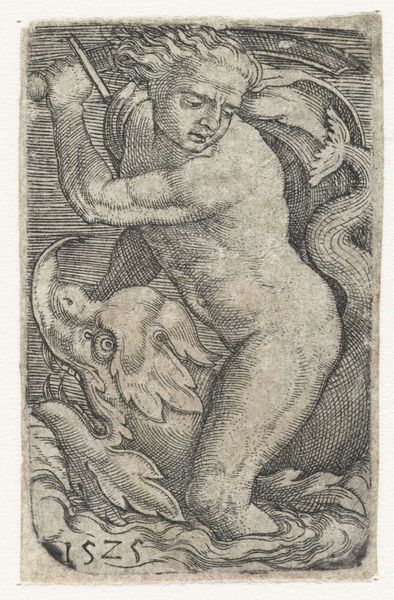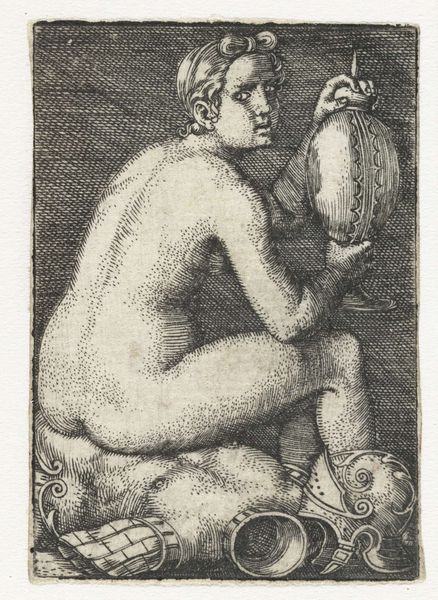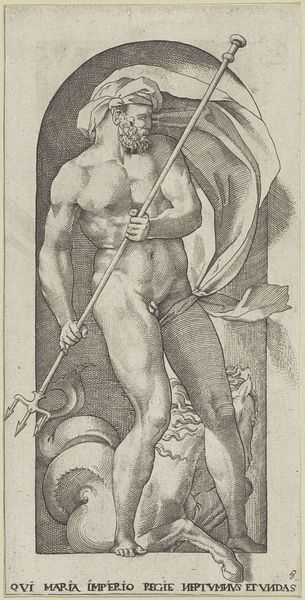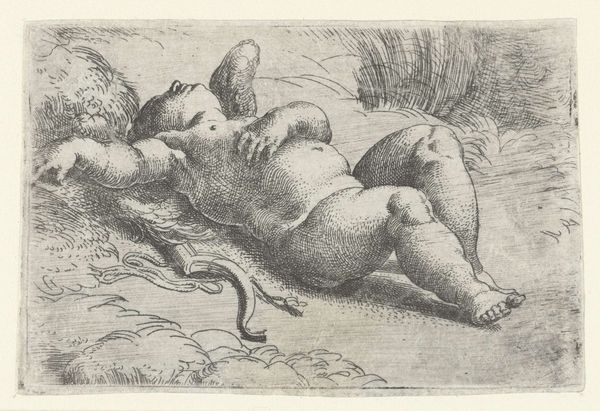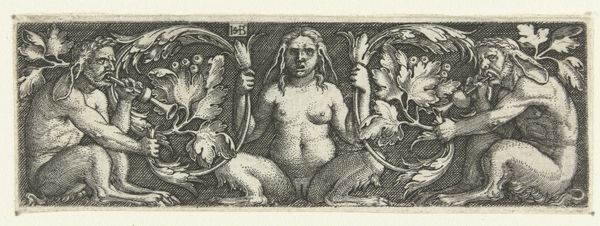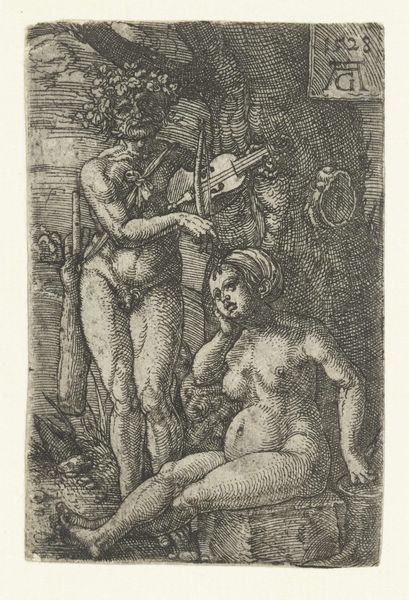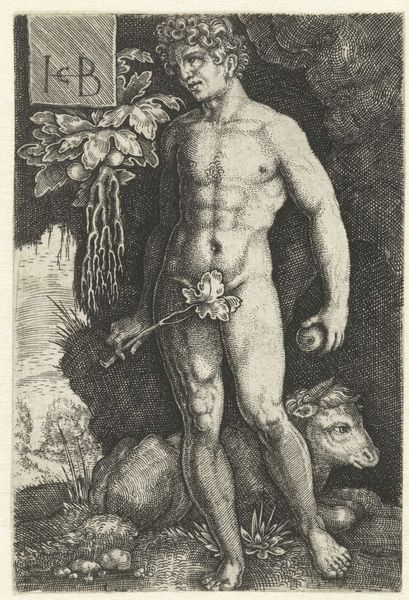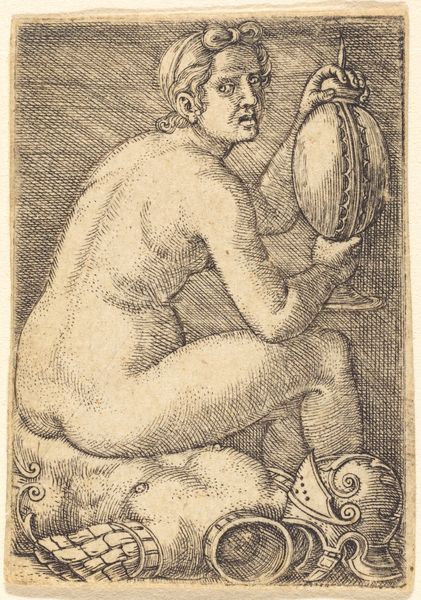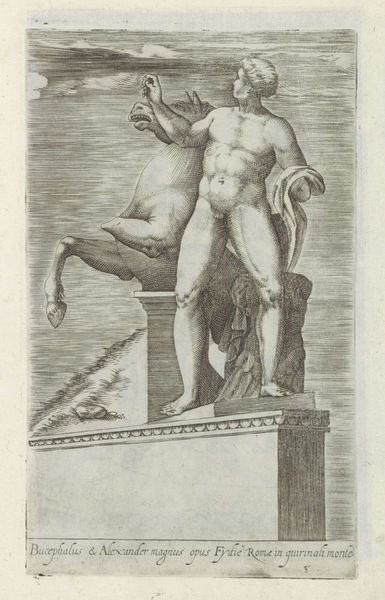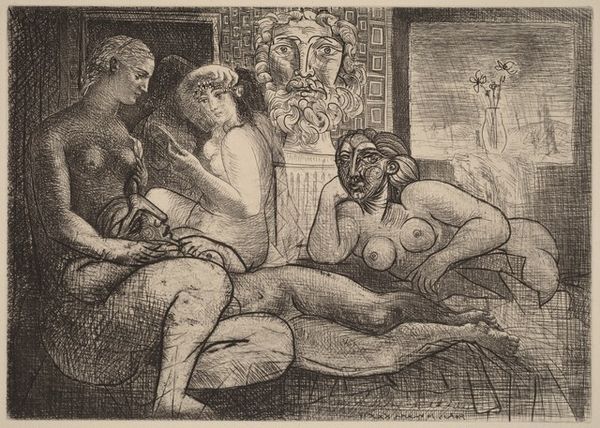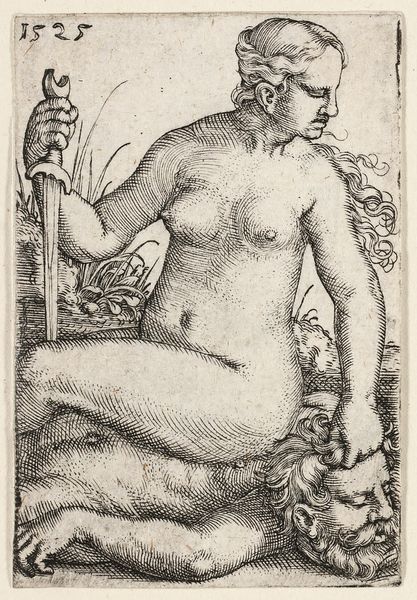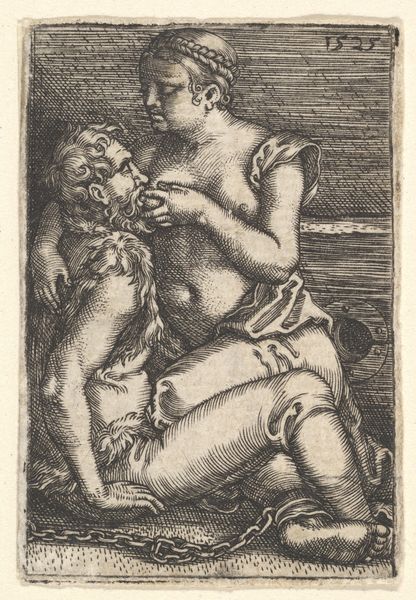
Dimensions: height 26 mm, width 46 mm
Copyright: Rijks Museum: Open Domain
Curator: Albrecht Altdorfer’s "Liggende Neptunus," created around 1506 to 1538, depicts a reclining Neptune rendered in ink. It's a surprisingly intimate portrayal of the sea god, wouldn't you agree? Editor: Absolutely. My first impression is one of textured power, even confinement. The density of the linework and the way it almost cages the figure creates a sense of tension. It contrasts oddly with the subject himself. Curator: The portrayal of Neptune as a reclining nude, rather than the powerful, trident-wielding god of the sea, is already quite radical, specifically for his time. It invites us to consider shifting power dynamics in the Renaissance, and to interrogate conventional masculinity. He’s almost…vulnerable. Editor: Precisely. And that vulnerability is accentuated by the serpent entwined around his legs and the creature beside him. In mythology, serpents often represent chaos and untamed forces, while hybrid creatures symbolize a union of realms. Is Altdorfer perhaps trying to convey Neptune's dominion over, or integration with, these volatile elements? Curator: Possibly. Although his mastery over the sea may also speak to contemporary socio-political control through maritime power and commerce. Is the artist speaking to power as much as sexuality? The rendering of the body, even with what reads to our eyes as awkwardness, participates in, say, the male gaze. Editor: It is worth noting that the trident is still present. But he isn't wielding it triumphantly. Here the figure almost presents an invitation into a more intimate and psychological space than the triumphant narratives that are usually seen around that era. The symbol is there, just less pronounced. Curator: He’s reclaiming power by subtly representing control. I think examining Altdorfer’s life and involvement in the German Peasants’ War really gives insights into the politics of art and freedom. The rendering of this piece goes beyond representing myth, it challenges structures of power as such. Editor: Interesting, considering the period when the artist lived and that political chaos, this could indeed point us in the right direction about Altdorfer and the symbols of his era. Curator: Thinking of the era as such can help unveil many assumptions when experiencing this piece. It transcends simply seeing an allegorical representation of the sea god. Editor: And for me it underscores how visual symbols echo through centuries, accumulating layers of cultural meaning and memory, as something that we continue to unpack in our contemporary world.
Comments
No comments
Be the first to comment and join the conversation on the ultimate creative platform.
